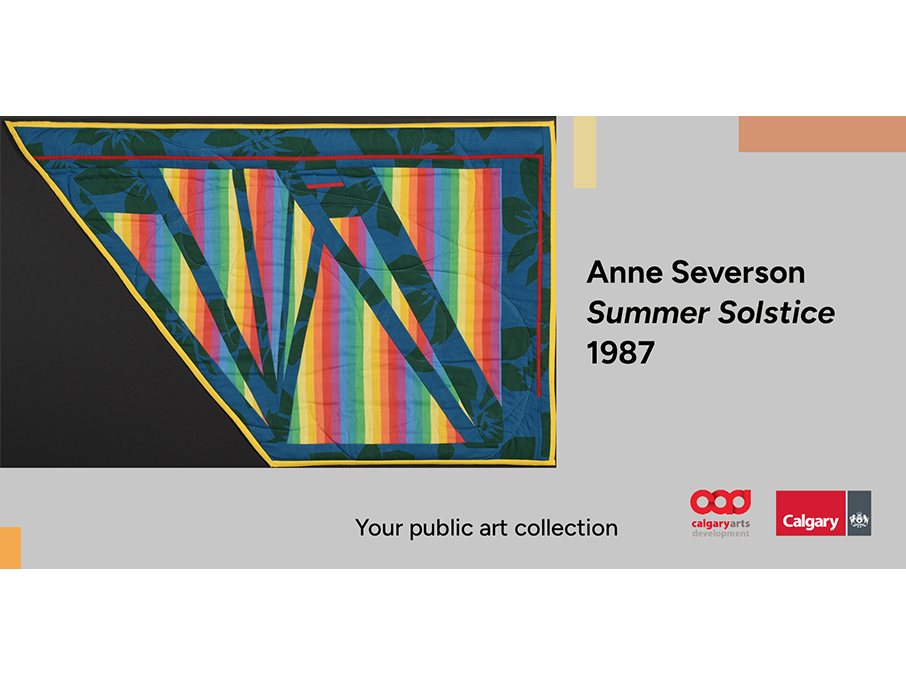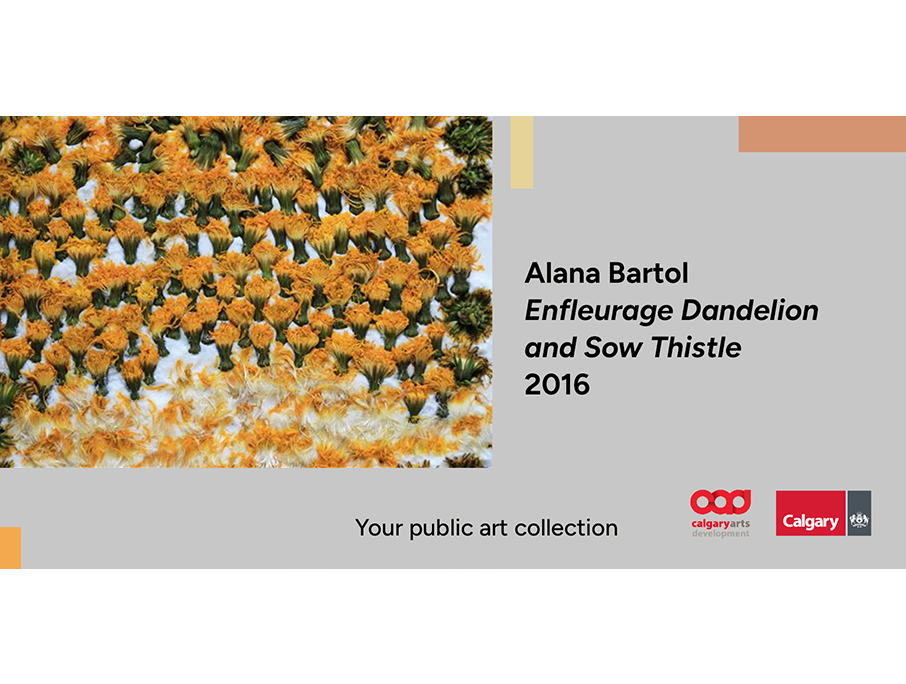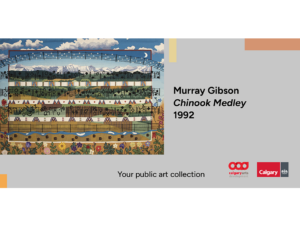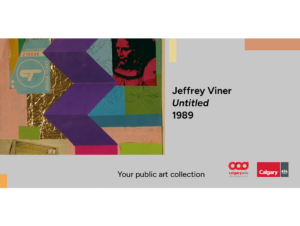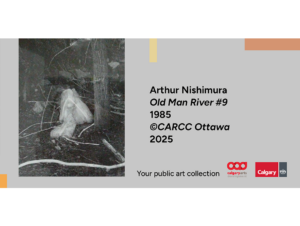The Program
Now Touring: Public Art Billboards shines a spotlight on artwork from Calgary’s Public Art Collection by making it part of people’s daily commutes.
The fourth series of artworks from the collection, titled A Fleeting Glimpse, is on billboards starting July and shares stories of history, identity and interconnected narratives through art. These 11 artworks are curated by Tomas Jonsson and are on display until December 2025. The featured artists include Anne Severson, Rachel Duckhouse, Alana Bartol , Jed Irwin, Terry Gregoraschuk, Murray Gibson, Dora Helen Mackie, Jeffrey Viner, Arthur Nishimura, Gilbert William Bayes and H.G. Glyde.
Curatorial Reflections by Tomas Jonsson
A Fleeting Glimpse
Being invited to curate a collection of works from The City’s Public Art Collection is equal parts thrilling and daunting, as any form of honouring should be. Reviewing an array of spreadsheets, folders and image files, I searched for footholds of meaning and connection I could build on.
I was drawn in by personal connections — names of artists, colleagues, mentors. Thumbnails of images sparked memories. A visit to the vault gave me time to reflect, to sit with these works, tucked away in the corner of a vast warehouse. Invited to select 10 works to highlight, certain themes started to emerge, shaping my choices into something that felt like a conversation. But alongside this process came the inevitable search for lost connections — permissions to access forgotten histories. Disrupted relations, a desire to build and reconnect, tentatively, temporarily — an imagined relationship. I carried this visit with me, along with tantalizing fragments of information.
This collection has been carried and cared for by many hands, shaped by waves of acquisitions, shifting policies, changing relationships. As Kay Burns notes, the collection began in the 1920s, largely consisting of statues and public artworks. Many works entered the collection in 1992 when the Calgary Allied Arts Foundation gifted a significant body of work to the city. Others came through research and creation-based projects such as Watershed+, expanding what public art could be.
These shifts reflect broader changes in how we think about art’s place in the public sphere. Beyond display in galleries, offices and public spaces, these works have been given space to breathe — displayed in bus shelters, on billboards and street level window galleries.
The works in this collection shift in and out of visibility, but they remain. Perennial and contingent, the individual works — and the collection as a whole — do not exist in isolation. They carry traces of connection — to places, to people, to histories and narratives, some documented, others only felt.
How do we hold on to the resonant meanings that draw from this work?
This gathering is a small attempt to move them. To draw attention, to re-engage, to carry forward.
Select an artist below to learn more.

Anne Severson, Summer Solstice, 1987, cotton
Gift of the Calgary Allied Arts Foundation, 1987
I met Anne Severson when she was Director of The New Gallery. As a student dipping my toes into the Calgary arts scene, Anne opened doors — offering guidance, encouragement, especially in arts writing. It was a pleasure to encounter her again through her work in the vault. I can find little information on Summer Solstice, but I don’t need documentation to know the impact Anne had. Her dedication to writing, feminist arts practice, advocacy and mentorship is evident in the paths she helped shape. I was drawn to the image immediately — the way it captures the resonant quality of solstice.

Rachel Duckhouse, Bow Flow 1, 2013, black ink and sepia ink on paper
Commissioned by The City of Calgary Utilities and Environmental Protection (UEP) Department through the Public Art Program, 2013
Created through a one-year residency as part of the innovative Watershed+ program, Bow Flow reflects on the relationship between rivers and architecture — how land shifts, how we build, how nature pushes back. It responds to the 2013 flood, bifocal mappings depict shifting terrains, layering observation with stories gathered from city employees. Bureaucratic structures and natural forces unfold in conversation and tension.

Alana Bartol , Essential Oils for Alberta, 2016, Enfleurage: Dandelion and Sow Thistle (Hillhurst Sunnyside, Downtown West), colour photograph on paper
Public Art Collection. Purchased from the artist, 2019
As part of a residency at The City of Calgary’s Firehall #6, Bartol spent time walking, foraging, talking with people. She looked at plants often dismissed as weeds — dandelion, sow thistle — documenting their medicinal and edible properties. This work shifts perception, drawing attention to what’s overlooked, what persists.

Jed Irwin, Getting Past History, 1984, acrylic on canvas
Gift of Jed Irwin through the Calgary Allied Arts Foundation, 1993
I was drawn to both the title and the artist — a former instructor, and someone whose work, and humanity, was a strong influence on me. Jed Irwin has been following the tradition of abstraction for over 50 years. He approaches each canvas as a new beginning — “the blank canvas as square one.” His work exists somewhere between classical formalism and lyrical expressionism, balancing structure with impulse.
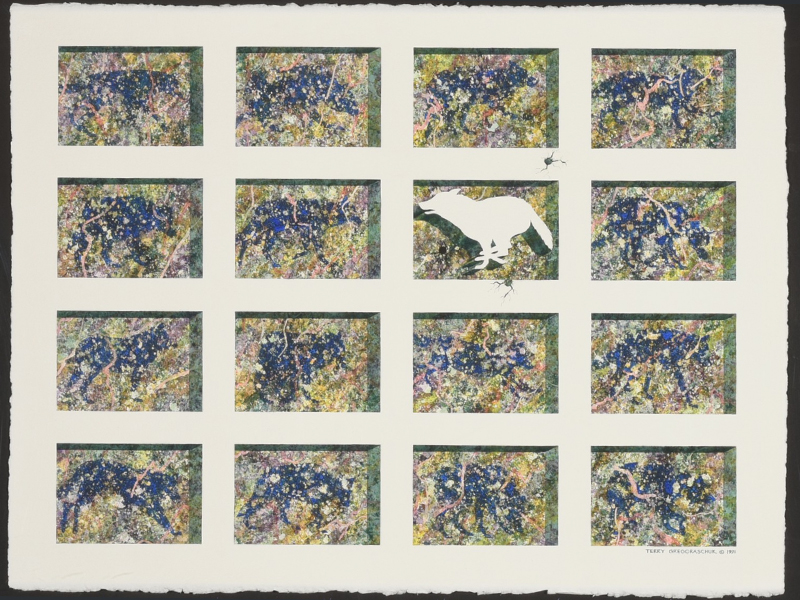
Terry Gregoraschuk, On the Run, no date, acrylic on canvas
Gift of the Calgary Allied Arts Foundation, 1992
Movement. Urgency. Something just out of reach. Like an errant Muybridge horse, the white silhouetted wolf runs counter, or towards the abstract framed animals, while other wildlife and a squadron of bush planes follow outside of the frames of the picture. Gregoraschuk’s work has an energy that suggests action unfolding beyond the frame.

Murray Gibson, Chinook Medley, 1992, wool and silk tapestry
Gift of the Calgary Canada Day 125 Committee, 1992
I was drawn to this work because of Murray’s use of quillwork-inspired patterns and the complex layerings of buffalo tracks, railway lines and prairie wildflowers against the vast sky and Chinook arch. Upon further exploration of Murray’s practice, I resonated with his observation:
“The primary role of art is to communicate; to begin a conversation between the artwork and its audience.” The works “not truly fulfilling [their] role as communicator until [they move] in the community.”
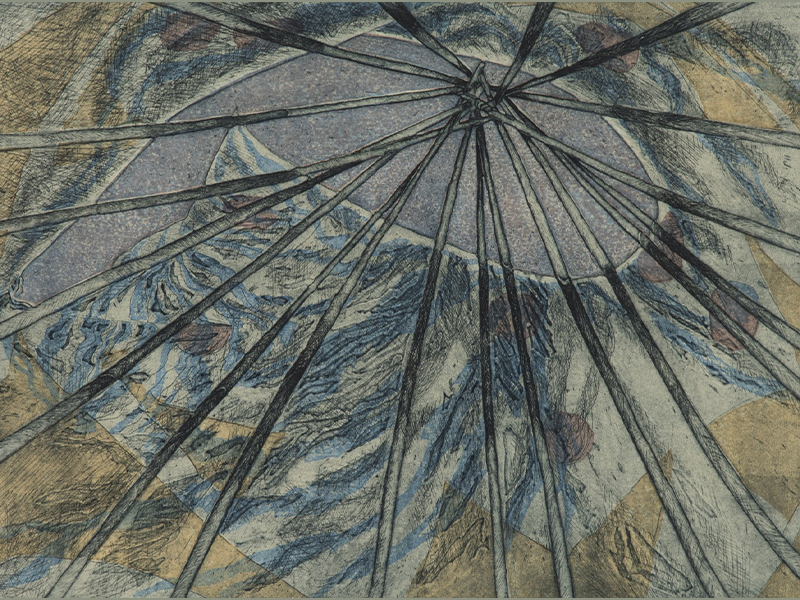
Dora Helen Mackie,Tipi Centre #1, 1984, woodcut and intaglio on paper
Gift of the Calgary Allied Arts Foundation, 1992
Dora Helen Mackie, I’ve learned, was captivated by the interplay of form, light and colour inside a tipi. With a background in biological sciences, she was drawn to prairie culture, fascinated by its cycles — plants, animals, people, seasons. She made nature’s rhythms visible, mapping symbolic and spiritual markers of place. This work sits with land, structure, shelter.
I want to know more: What was Dora’s relationship to the tipi? What — and who — drew her in?
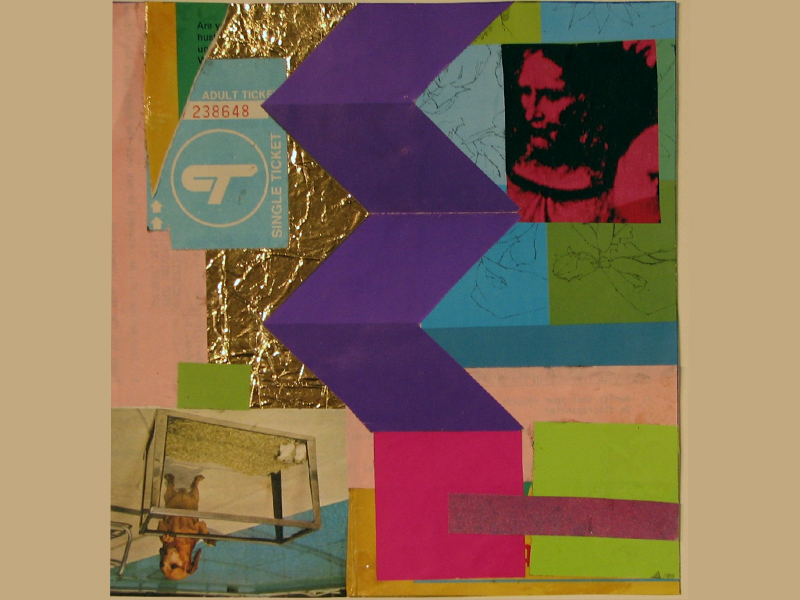
Jeffrey Viner, Untitled, 1989, paper collage
Gift of the Estate of Jeffrey Viner through the Calgary Allied Arts Foundation, 2004
A small fragment of a rich and overwhelming collection, and artistic practice. The work of this prolific artist is a layered, fragmented, reassembled map of a life and a place. Viner’s collages feel like an act of reconstruction —finding meaning in the in-between spaces, what remains and what is left behind.
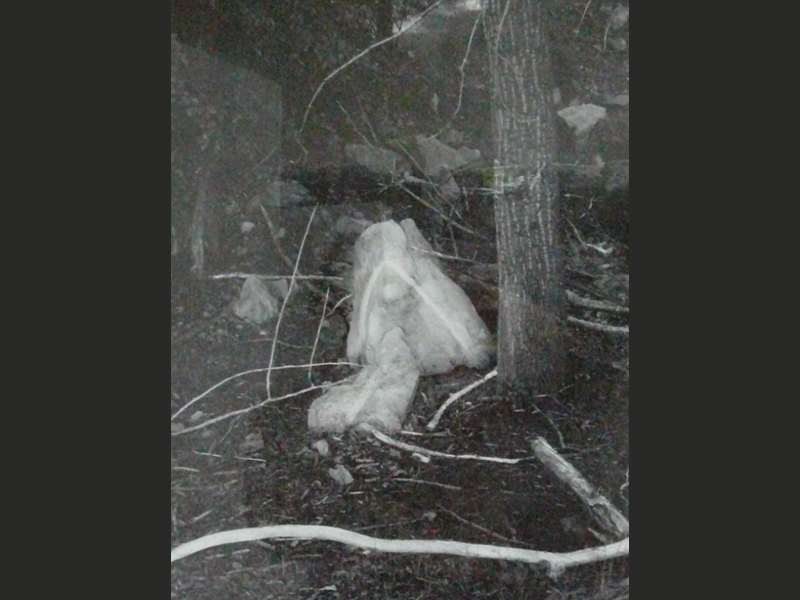
Arthur Nishimura, Old Man River #9, 1985, silver gelatin print on paper
Gift of the Calgary Allied Arts Foundation, 1990
Another former instructor, colleague and friend, Arthur Nishimura’s photographs carry a quiet weight. He works with traditional film-based techniques, developing images by hand, allowing the process itself to shape the final work. His photographs are about more than composition — they are about what an image does, what it holds.

Gilbert William Bayes, The Frog Princess (Maiden and Four Toads), c.1920, bronze
This work exists in storage now, but for me, it is rooted in nostalgic memory. It was a fixture of the Devonian Gardens before its renovation, a part of a cityscape that no longer exists in the same way. Like the Gargoyles that clung to The Herald Building downtown, no longer standing, and the Olympic figures emerging from architectural and natural pavilion of redefined Olympic Plaza, the work remains, but its context has shifted.
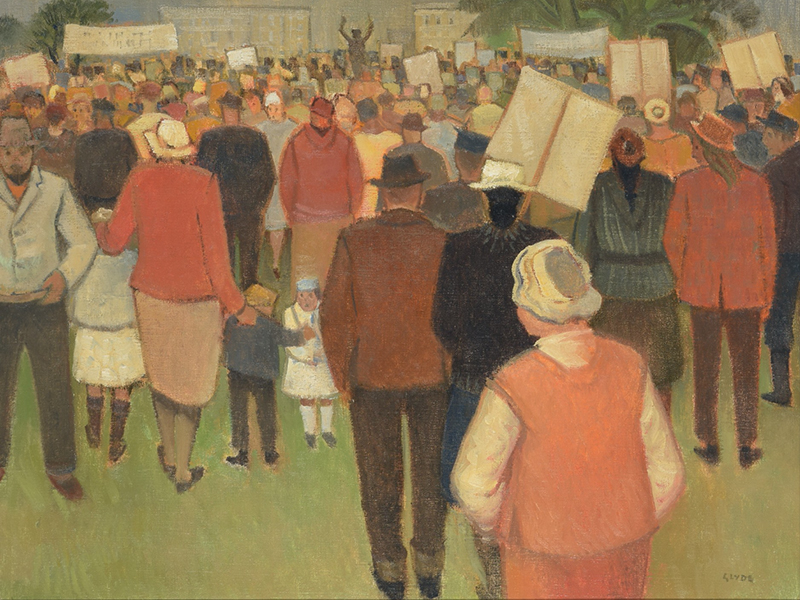
H.G. Glyde (not on a billboard), Peaceful Demonstration, no date, oil on canvas
Gift of the Calgary Allied Arts Foundation, 1992
Protest is both contingent and perennial. In H.G. Glyde’s Peaceful Demonstration (learn more about it here), we don’t see the specific content of the placards, but we recognize the impulse; the dynamic of transformation that comes from gathering, from speaking. This work is not included in this selection of work for display, as another work of Glyde’s was recently subject to protest and has been taken out of view. Perhaps in the future both will be made visible when we are ready, when the right context emerges to properly engage with them.
City of Calgary Public Art Collection
The City of Calgary has an art collection of more than 1,300 works, including: outdoor sculptures, installations integrated into infrastructure, monuments, memorials, environmental art, temporary projects, street art and functional objects. Calgary’s Public Art Collection also includes an assortment of portable art — photographs, paintings, sculptures, glass, installations, ceramic and textiles — that are rotated throughout city spaces and public areas such as parks, plazas, recreational facilities, public buildings and the Plus 15 network. The public art collection has been growing alongside our city, building on the importance of art and storytelling in our collective memory.
At any given time, approximately 80 per cent of the collection is on free public display for Calgarians to enjoy. When artworks are not being rotated through public spaces or out on loan, they are kept in a storage facility where maintenance and conservation work ensures they will continue to be enjoyed by future generations.
The billboards give Calgarians a glimpse at our cultural heritage through artworks featured on these outdoor canvases.
Calgary Arts Development is the commissioning body for new public art projects, while the collection is stewarded by The City of Calgary. Learn more about the collection here.
Where in Calgary are the currently active billboards? Check out our interactive map to find out.
